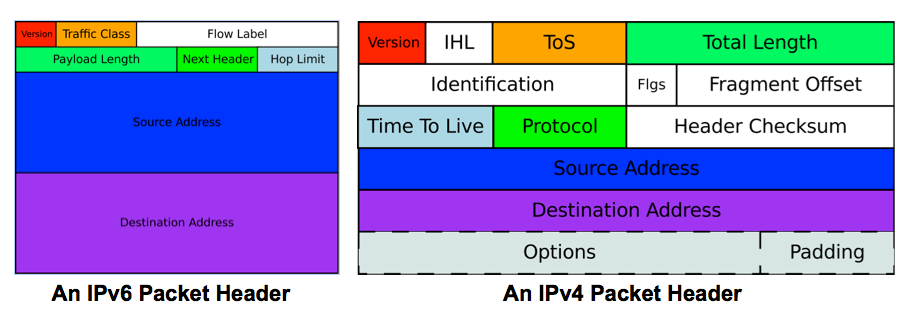
IPv6 Effects on Web Performance [Archived]
OUT OF DATE?
Here in the Vault, information is published in its final form and then not changed or updated. As a result, some content, specifically links to other pages and other references, may be out-of-date or no longer available.
Will IPv6 positively affect web performance in the future? Blake Crosby shares his thoughts on the answer to this question.
Guest Blog Post By Blake Crosby
There are a lot of efforts to improve the speed of the web. The inevitable release of HTTP 2.0 in the near future will address many of the existing web performance bottlenecks.
Will IPv6 increase web performance in the future?
The answer is Yes! IPv6 has many improvements over its v4 counterpart that will help make the web a faster place.
Packet Fragmentation
IPv6 does not fragment packets; this means that any packet reassembly does so at the client or at some other endpoint. The router is free to use those extra CPU cycles to move packets faster through the network.
Checksumming Done at Higher Layers
Routers don’t need to spend time checking the integrity of the IPv6 header (for TCP packets). Instead, validating the data packet happens at the TCP layer. Less work for the router means moving those packets faster!
Keep It Simple
The IPv6 packet header is much simpler than the IPv4 header, making it much easier to process these packets as they flow through routing equipment
![IPv6 and IPv4 Packet Headers By Mro [GFDL (http://www.gnu.org/copyleft/fdl.html) or CC-BY-SA-3.0-2.5-2.0-1.0 (http://creativecommons.org/licenses/by-sa/3.0)], via Wikimedia Commons IPv6 and IPv4 Packet Headers](IPv6-and-IPv4-Packet-Headers-610x214.png)
For example, the Time To Live (TTL) field has been replaced with a Hop Limit field (a simple counter), thus routers don’t need to calculate the time the packet has spent in queues. One less calculation to be made before sending that packet along to the next hop.
Bigger Is Better
Reducing the number of round trips is the best way to improve your web browsing experience. IPv6 can help with that by using Jumbograms. Having the ability to squeeze up to 4096 MB in a single packet will reduce the number of round trips required to download data. Provided the link layer has a large enough MTU.
Better Mobile Performance
Due to IPv4 limitations, mobile devices need to use Triangular Routing in order to receive and send packets to/from the Internet. In triangular routing, the mobile device is able to send packets directly to the remote host; however, the remote host must route packets through a “Home Agent” which can be very far away from the actual user.
For example, a particular network may have a limited number of home agents. If the mobile device is located in San Francisco, and the mobile carriers home agent is located in Houston, all packets destined for that San Francisco mobile device must be routed through the home agent in Houston.
Mobile IPv6 eliminates the need for this network architecture. Packets need not be routed through a home agent.
If you are interested in learning more about the challenges of improving web performance, see my analysis of IPv4 versus IPv6. Additionally, I highly recommend “High Performance Browser Networking” By Illya Grigorik.
 Blake is an Operations Engineer with Fastly, the smartest CDN on the planet.
Blake is an Operations Engineer with Fastly, the smartest CDN on the planet.
His intimate knowledge of web performance ensures that Fastly stays ahead of the curve with emerging technologies.
He’s also on the Board of Directors for the Toronto Internet Exchange (Torix).
Any views, positions, statements or opinions of a guest blog post are those of the author alone and do not represent those of ARIN. ARIN does not guarantee the accuracy, completeness or validity of any claims or statements, nor shall ARIN be liable for any representations, omissions or errors contained in a guest blog post.
OUT OF DATE?
Here in the Vault, information is published in its final form and then not changed or updated. As a result, some content, specifically links to other pages and other references, may be out-of-date or no longer available.
